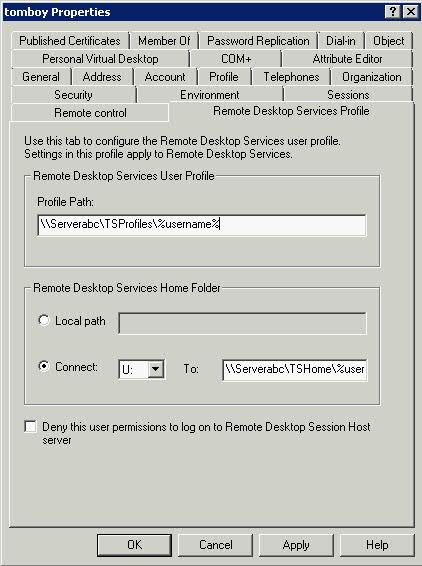
- Server 2012 r2 remote desktop services roaming profile how to#
- Server 2012 r2 remote desktop services roaming profile windows#
Now, that we’ve completed the basic setup let’s discuss some of the considerations, pros and cons. Just be sure to unmount the file again before the user logs on again. vhdx file to see what’s inside and even make modifications if necessary. vhdx is not logged on, administrators are also able to simply mount the. Since this is a mounted volume, it’s fully transparent for applications that need to read and write to the profile. Also, note that UPD makes sure that if an existing cached copy of a roaming profile is in place it will create a backup, by renaming that folder to -BACKUP. vhdx file is mounted underneath C:\users\. As you can see the users GUID will be used in the name of the file.Īs described earlier in the introduction, on the RD Session Host servers the. vhdx file will be created based on the template. This is the template file we mentioned earlier in the introduction.įor every new user that logs on to an RD Session Host in this Session Collection a new. When we go back to the share, we’ll see that a new file has been created called UVHD-template.vhdx. We then provide the UNC path of the share we just created, provide a maximum size, and (as a first step) we configure to store all user settings and data inside the profile disk.
Server 2012 r2 remote desktop services roaming profile windows#
Obviously, in production environments this would ideally be a high-available file server or SAN but for this demo we’ll be using a virtual machine running Windows Server 2012. Besides basic deployment the only prerequisite for setting up UPD is having a central share where we can store the User Profile Disk itself.

We also assume that a basic Deployment and Session Collection have been created. As you probably know these roles can run on a single Windows Server 2012 box. The following steps assume that you already have a basic Session-Based Desktop Deployment running, with an RD Connection Broker, an RD Web Access and at least 1 RD Session Host.

Server 2012 r2 remote desktop services roaming profile how to#
In this article we’ll take a look at how to configure UPD for Session-Based Desktop Deployment and we’ll cover some considerations, pros and cons. Moreover, since Session-Based Desktop Deployment is part of the same RDS platform, UPD can also be enabled for RD Session Hosts running Windows Server 2012. This suddenly means really easy personalization of a pooled VM in your Windows Server 2012 Virtual Machine-Based Desktop deployment. The OS is still writing settings to C:\users\. As UPD works on a lower level there are no compatibility issues. Basically everything that would normally be stored in C:\users\ on the local cached copy is now immediately saved to the.

Without going into too much detail here the technique behind this is as follows A user logs on to a RD Session Host and his roaming profile is copied from a central network share to the RD Session Host server (by default under C:\Users\ upon logon. Obviously this is very important when running multiple RD Session Host servers in a farm. Basically, for RDS roaming profiles is a technique that allows you to have the same personal settings no matter on what RD Session Host you log on to. You will probably also be familiar with the term and technology called Roaming Profiles. If not, make sure you read this paragraph to understand the basic idea behind User Profile Disks, which from now on we will be calling UPD. If so, you can quickly read through this first paragraph since this will be a recap of what you already know. By now you have probably heard about the term User Profile Disks and what the basic idea behind this technology is.


 0 kommentar(er)
0 kommentar(er)
